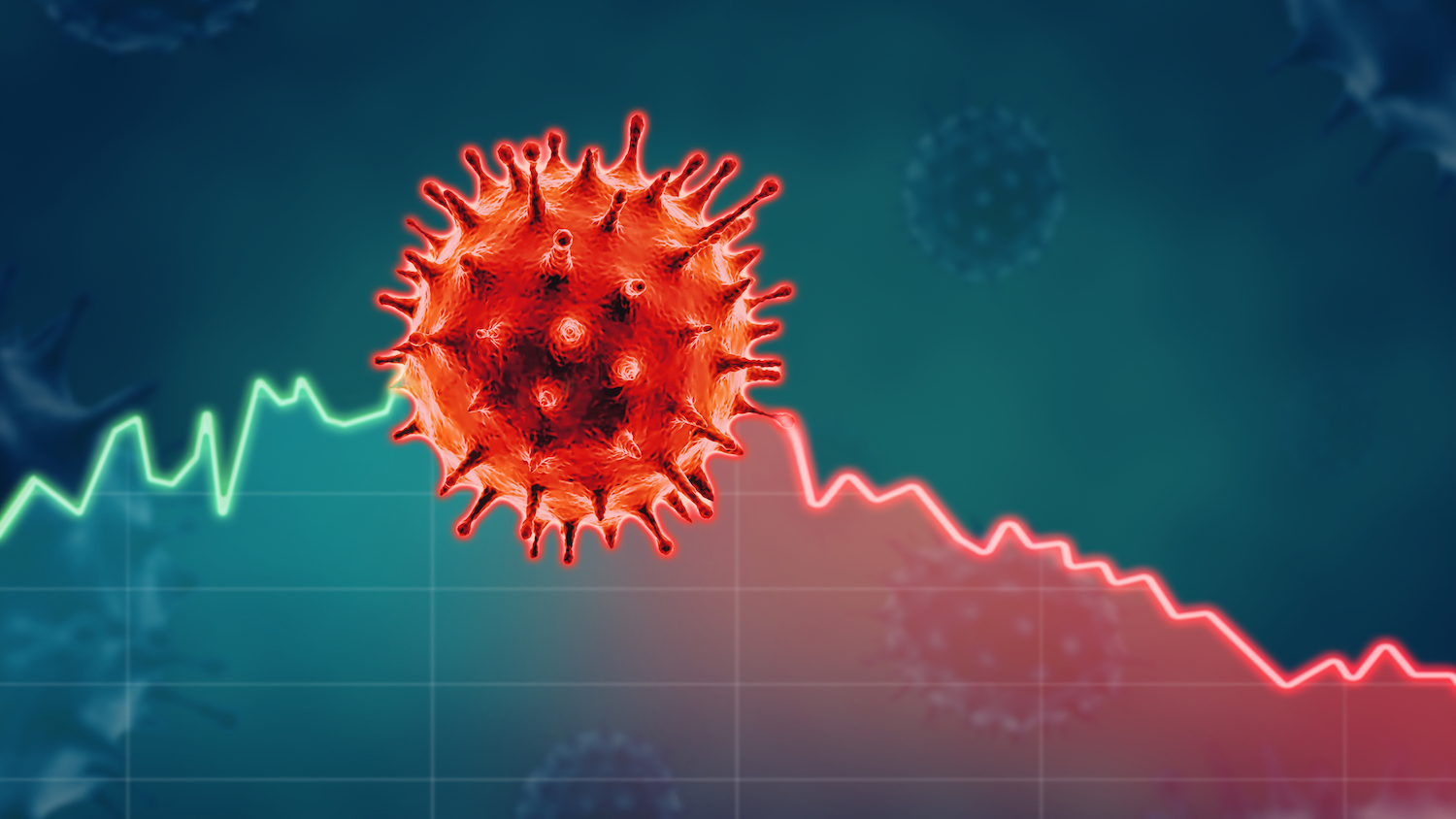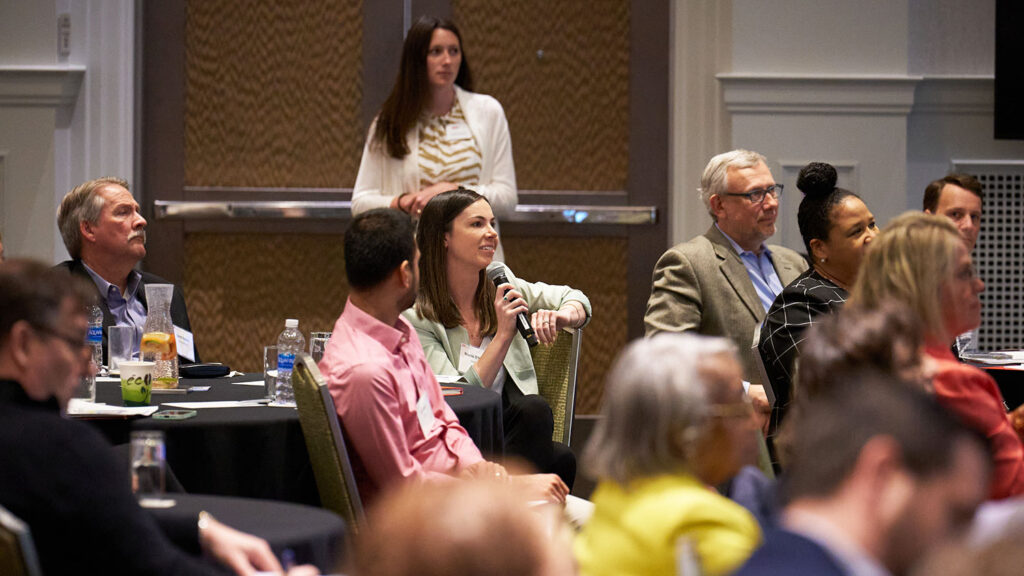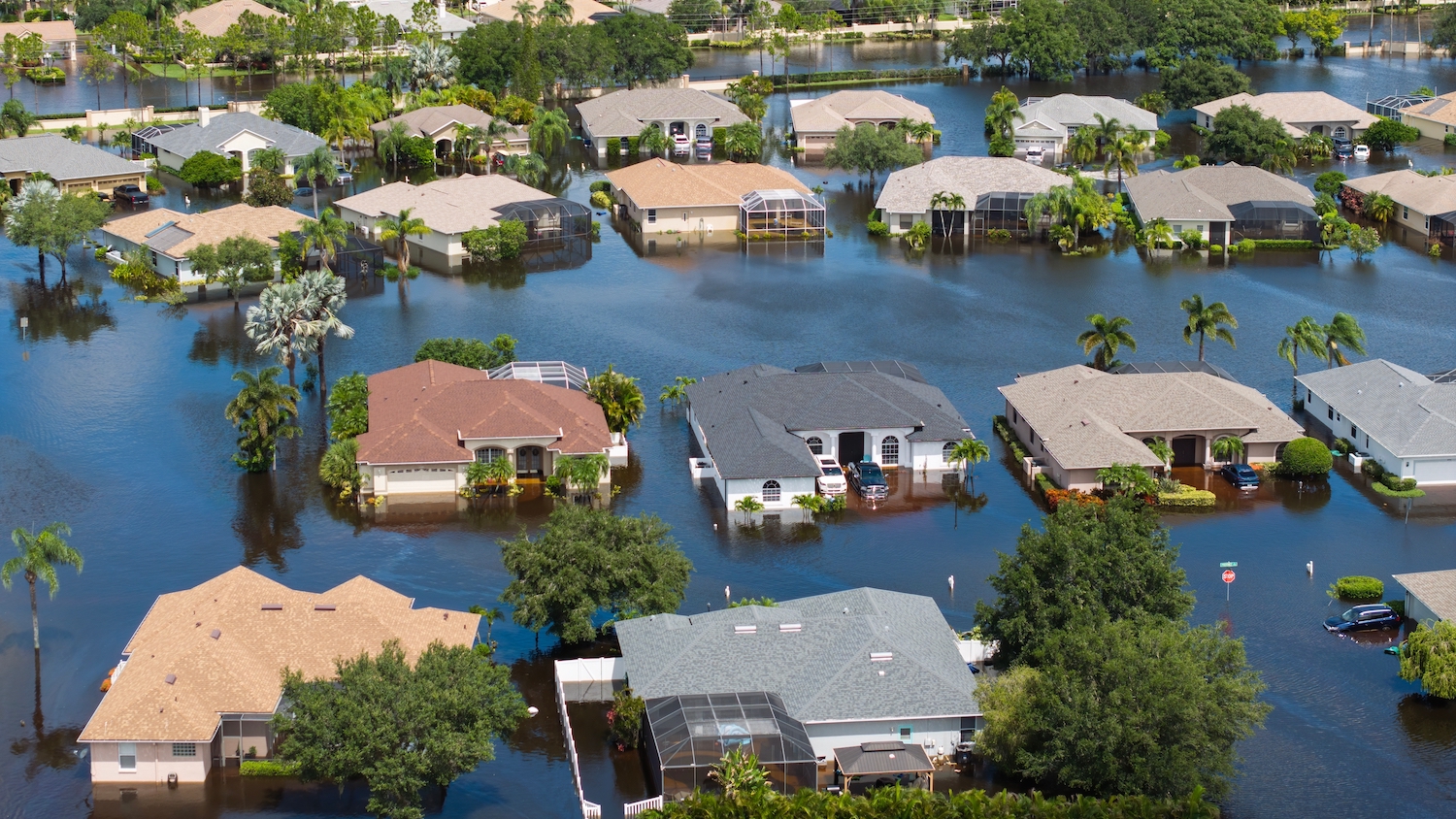
Outsmarting Viral Outbreaks
Pathogens — in people, plants or animals — are increasingly frequent and difficult to predict.
Editor’s Note: This is the latest in a series from the Poole College of Management that taps experts from across NC State to explore societal issues through the lens of risk management.
Risk Meets Reality
From global pandemics like COVID-19 to fast-moving plant viruses that threaten food supplies, infectious diseases are emerging and evolving at a pace that challenges current systems of response.
Research from global health agencies and agricultural experts points to a clear trend: environmental changes, global trade and urbanization are increasing the chances of outbreaks across regions and sectors. These biological risks don’t just affect health — they can disrupt entire industries, strain economies and impact everyday life.
“When do the stars align in a way that leads to another COVID pandemic?”
Matt Koci
Co-Director
Animal Health and Nutrition Consortium
As the world becomes more interconnected, organizations must think beyond traditional risk planning. Understanding how pathogens spread, and investing in early detection and cross-sector collaboration, will be essential to building resilience and protecting both human and environmental health.
Low Odds, High Impact
The so-called “100-year phenomena” in viral epidemiology refers to the idea that pandemics tend to emerge roughly once every century — but experts caution that this pattern isn’t based on a strict scientific timeline.
“Pandemics are paced out about every three or four generations, roughly 100 or so years,” explains Matt Koci, professor of immunology, virology and host-pathogen interactions in the College of Agriculture and Life Sciences (CALS) at NC State. “But it’s less about specific time intervals, and more a reflection of just the low probability of viruses mutating in a way” that enables them to spread widely among humans.
David Rasmussen, associate professor of entomology and plant pathology at CALS, offers a metaphor to illustrate the challenge of predicting pandemics, referring to the “ears of the hippo” analogy: “While it’s hard to predict when a hippo will surface, what we do know for sure is that there’s a whole lot of hippo biomass lurking underneath the water.”
The same holds true for viruses — countless strains exist below the surface, often unnoticed, but ready to emerge when conditions align.
These conditions include a virus’s ability to mutate, jump from animal hosts to humans and then spread effectively between people. “This process requires multiple unlikely events to occur simultaneously,” Koci notes, making pandemics rare but not random.
What’s changing, however, is the frequency of these conditions coming together. With climate change, deforestation, increased global travel and closer human-wildlife interaction, we may be entering an era where so-called “100-year events” could happen far more often.
Plant Pathogens in the Food Chain: Scarcity and Instability
The human cost of plant pathogens goes far beyond the fields they infect. Rasmussen stresses this point with real-world examples, noting that plant viruses can deeply disrupt both local communities and global systems.
In East Africa, cassava virus infections pose a major threat. Cassava is a staple crop for millions, and as Rasmussen explains, these viruses can compromise a primary source of calories and nutrition. “When cassava fails, it’s not just about losing a crop — it’s about endangering food access for entire populations,” he says. The damage can ripple through communities, leading to food shortages, malnutrition and economic strain.

The impact hits closer to home in Florida, where the citrus industry has faced multiple outbreaks. Rasmussen points to the Citrus Tristeza virus in the late 1990s and early 2000s, followed by citrus greening disease, which has devastated orange groves across the state.
“We’re not just talking about a few trees getting sick,” he explains. “These pathogens wiped out whole orchards, causing major losses for growers and ripple effects throughout the supply chain.”
Those ripple effects are central to the concern. “Imagine if a major new pathogen emerged that affected wheat, rice or corn,” says Koci. “The disruption to food production could create global economic instability — even political instability.”
Rasmussen adds that people should consider the foods they care about most: “Whether that’s their orange juice for breakfast, their coffee or chocolate, or even wine — plant pathogens could hit those industries hard.”
Rasmussen also cautions against overreacting — he emphasizes that the risk is real, even if not fully understood.
The Costs of Contagion: Lost Productivity and Food Shortages
On the other hand, the human toll of animal pathogens is both significant and wide-ranging, affecting not only public health but also economic stability and workplace productivity. Seasonal influenza alone claims the lives of more than 36,000 Americans each year, a toll that we tend to accept too easily, Koci says.
Beyond mortality, the economic cost is staggering. Acute viral infections cost the U.S. economy over $100 billion annually, primarily through lost productivity. Koci explains that this loss stems from a mix of factors: parents staying home to care for sick children, workers showing up ill and infecting colleagues, and the ripple effect of reduced workforce capacity.
Annual global deaths due to animal-derived pathogens1
“People still come to work sick,” Koci notes, pointing to a persistent workplace culture that rewards perseverance over public health. He adds that in jobs without paid sick leave, the pressure to work through illness often outweighs the risks of spreading infection.
The biology of viral transmission further complicates the issue. Most viral infections are most contagious in the first two days — before symptoms peak — yet healthcare visits often happen after that window has closed. Ideally, Koci argues, a responsive system would offer rapid testing, similar to those provided during the COVID-19 pandemic, quick administration of antivirals and workplace support for early isolation
Animal pathogens also carry indirect consequences for human health. Koci recalls a poultry virus so severe in parts of the developing world that the World Health Organization lists it as a human health threat — not because it infects people directly, but because it devastates poultry populations, leading to protein shortages and widespread undernutrition.
Transforming Risk Into Opportunity

Staying Ahead of the Spread
Surveillance and resilience in pathogen management are foundational to public health, yet they often go unnoticed — until a crisis hits. Rasmussen describes surveillance as “incredibly non-flashy” and even “unsexy,” largely because it requires consistent investment, doesn’t produce headline-making discoveries and can seem invisible when it’s working well. But, he says, this quiet work is absolutely essential to preventing outbreaks before they begin.
The paradox of good surveillance, Koci points out, is that “when it works, nothing happens.” This makes it a tough sell for continued funding, especially in the absence of a visible threat. But that very invisibility — catching potential threats early and quietly — keeps communities safe and economies stable.
Bird flu, particularly the H5N1 strain, remains a complex and evolving threat. First identified in the late 1990s, H5N1 hasn’t developed the ability to spread efficiently from human to human. Still, the virus circulates widely in bird populations and has begun showing up in mammals, including wild animals and cattle across Europe and North America.
The virus, Koci said, seems to be testing different hosts.
While bird flu hasn’t sparked a major human outbreak, its continued mutation and spread demand heightened vigilance.
It’s “not if, but when and how the virus might eventually adapt to transmit efficiently between humans,” Koci said.
The COVID-19 pandemic is evidence of the power pathogens have to disrupt everything: economies, supply chains, individual lives. It also yielded innovations to mitigate the effects of future pandemics, including scalable, cost-effective surveillance techniques. Rasmussen noted that wastewater surveillance, COVID-19 breakthrough, allows for population-wide monitoring of viral activity through sewage.
Vaccination is another critical pillar of resilience. Koci calls vaccines “one of the most impactful inventions in human history,” rivaled only by indoor plumbing in terms of lives saved.
Beyond disease prevention, vaccines offer broader health benefits. The flu vaccine, for example, doesn’t just reduce the likelihood of infection — it also shortens illness duration and lowers the risk of cardiovascular complications. Studies show that consistently getting the flu vaccine correlates with longer lifespans through reduced inflammation and stress on the body.
Some vaccines provide unexpected protections. The measles vaccine, Koci explains, helps preserve immune memory cells. Without it, measles can “wipe out” these cells, leaving individuals vulnerable to other infections.
Ultimately, resilience depends on a multilayered strategy: proactive surveillance, accessible vaccines, innovative public health tools and a cultural shift in how society values prevention.
“The more surveillance you do, the more likely we are to learn how things might be starting to go off the rails, and be able to nudge it back and self-correct it pretty quickly,” Koci said.
get to know our experts
more risk insights
1Grace D, Mutua F, Ochungo P, Kruska R, Jones K, Brierley L, Lapar L, Said M, Herrero M, Phuc PM, Thao NB, Akuku I and Ogutu F. 2012. Mapping of poverty and likely zoonoses hotspots. Zoonoses Project 4. Report to the UK Department for International Development. Nairobi, Kenya: ILRI.



